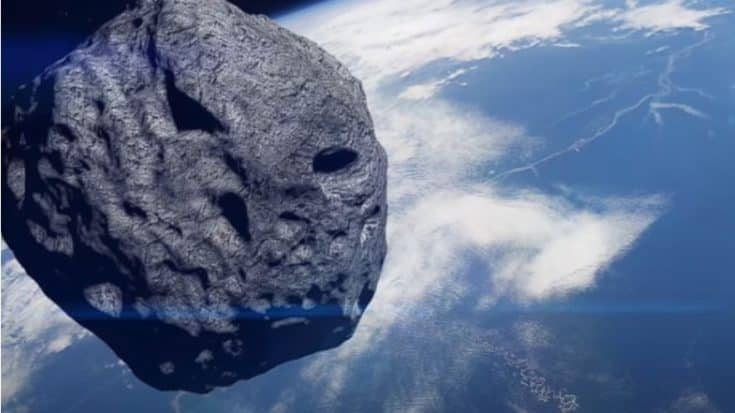A 100-Meter Asteroid Has Now A Chance Colliding Earth In 2032

via B.C. Begley / Youtube
For the first time, global planetary defense systems were activated in 2032 after scientists found a 100-meter-wide asteroid that had a remote possibility of hitting Earth. The asteroid, known as Asteroid 2024 YR4, was first detected on December 27, 2024, by an automated telescope in Chile.
Since its discovery, the asteroid has surged to the top of the impact risk rankings published by the European Space Agency (ESA) and NASA. It is now estimated to have a 1.3% chance of hitting Earth on December 22, 2032. In other words, there is a 99% chance that it will pass by safely.
“Most likely this one will pass by harmlessly,” said Colin Snodgrass, a planetary astronomy professor at the University of Edinburgh. “It just deserves a little more attention with telescopes until we can confirm that. The longer we follow its orbit, the more accurate our future predictions of its trajectory become.”
How Dangerous Is Asteroid 2024 YR4?
On the Torino Impact Hazard Scale, which ranks asteroid threats from zero to ten, Asteroid 2024 YR4 currently sits at level three. This means that while it requires close observation, the risk is still relatively low. The only asteroid to ever rank higher was Apophis, which in 2004 was temporarily rated level four before later being downgraded when new data ruled out any immediate danger.
Even if a 100-meter-wide asteroid wouldn’t wipe out the entire planet, it might nevertheless cause serious local harm if it struck a populous area. “At this stage, the best thing to do is to continue tracking the asteroid for as long as possible so that we can predict its trajectory with more confidence,” said Gareth Collins, a planetary scientist at Imperial College London.
By comparison, the asteroid that wiped out the dinosaurs 66 million years ago was 10 to 15 kilometers wide, meaning Asteroid 2024 YR4 is nowhere near that level of destruction. However, history suggests that city-sized asteroids strike Earth every few thousand years, making continued observation crucial.
How Scientists Are Responding
In response to the discovery, two UN-backed asteroid defense organizations have been activated:
The International Asteroid Warning Network (IAWN) is now making detailed observations to refine the asteroid’s orbit and impact risk. The Space Mission Planning Advisory Group (SMPAG) has also been alerted. If needed, this group would propose a deflection mission, similar to NASA’s DART mission, which successfully tested asteroid redirection in 2022.
Currently, the asteroid is moving away from Earth in a nearly straight line, making it difficult to pinpoint its exact orbit. Astronomers plan to collect more data over the next few months before it fades from view. If its risk status remains uncertain, it will likely stay on space agencies’ watch lists until its next close approach in 2028.
“The first step in the planetary defense response is to trigger further observations,” Snodgrass explained. “If these observations don’t rule out an impact, the next steps will be more detailed characterisation measurements using telescopes, and discussion of what space agencies could do in terms of more detailed reconnaissance and eventually mitigation missions. This asteroid is of the scale that a mission like Dart could be effective if required, so we have the technology and it has been tested.”
Scientists are now working to collect more data, but they are prepared to step in if necessary. The finding of Asteroid 2024 YR4 serves as a reminder of the significance of watching space rocks, regardless of whether it proves to be a genuine threat or merely another near miss.













